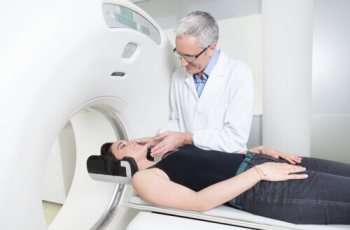Spinal Muscular Atrophy (SMA). is a combination of inherited disorders where specific nerve cells are absent, i.e. motor neurons in the spinal chord. Motor neurons in anterior horn cells receive nerve impulses sent by the brain and are responsible for causing muscle movements. They then send signals to the muscles via peripheral nerves. SMA is characterized by progressive and gradual muscle atrophy, also known medically as atrophy. Motor neurons are also lost due to a genetic fault. This can lead to muscle weakness. Recent studies have shown that age and severity of symptoms are prognostic indicators for people with spinal muscular atrophy.

The loss of muscle neurons is most common in the proximal muscles in the body, mainly in parts like the shoulders, backs, hips and legs. The proximal muscle groups are responsible for voluntary movements such as head control, crawling and sitting. Their progressive weakness can cause disabilities in children and adults. The mutation of genes is the leading cause of spinal muscle atrophy. This deadly disorder can be passed on to future generations. Mortality and morbidity of this neuromuscular disease are inversely related to the severity of the respiratory muscle damage.
The majority of cases of spinal muscle atrophy occur in newborns and babies. In total, 68% of children who suffer from spinal muscular atrophy die before they reach the age of a year. Almost 80% of them die before their fourth birthday. Innovative equipment and technology are making it easier for infants to survive. Improvements in nutrition and respiratory care ensure that children will live longer.




